History of Kostroma
Foundation of Kostroma
Kostroma is an old Russian city with a rich, eventful history. The date of foundation of Kostroma is officially considered to be 1152. This date was proposed by the historian Vasily Tatishchev, who associated this event with the activities of Yuri Dolgorukiy (Grand Prince of Kiev) in the north-east of Russia. However, there are no reliable sources proving this date. The hypothesis according to which Kostroma was founded much earlier, in the middle of the 9th century, doesn’t have scientific support as well.
The first written mention of the existence of Kostroma dates back to 1213. This year, Rostov Prince Konstantin burned Kostroma, which supported his brother Yuri (Vladimir Prince). In the 13th-14th centuries, fortified monasteries arose around Kostroma protecting the approaches to the town: the Ipatiev Monastery and the Nikolo-Babaevsky Monastery.
In 1364, Kostroma became part of the Moscow Principality. The location of this fortified town near the confluence of the Kostroma River in the Volga provided control over the Volga route and the route to the north along the Kostroma River, as well as over the local salt springs.
The wooden town was often subjected to attacks by Novgorod pirates. Therefore, in 1419, it was moved to a new elevated place, which became known as the Kostroma Kremlin. The first stone building in Kostroma was built here - the Assumption Cathedral.
More Historical Facts…
Kostroma in the 17th-19th centuries
In 1613, in the Ipatiev Monastery, Mikhail Fedorovich Romanov was called to reign, which was the end of such a period in the history of Russia as the Time of Troubles (Smuta). Thus, Kostroma became the “cradle” of the imperial Romanov dynasty.
By the middle of the 17th century, Kostroma, in its economic development and number of residents, became the third largest town of the Russian state after Moscow and Yaroslavl with well-developed textile, leather, soap making, silver, and icon painting industries. Blacksmithing, pottery, construction industries were also developed. Kostroma became a large trading center. In the second half of the 17th century, an outstanding school of fresco and icon painting was formed in Kostroma.
In 1708, Kostroma became a provincial town of Moscow Governorate. In 1767, Catherine II approved the coat of arms of Kostroma with the image of the galley “Tver”, on which she arrived in Kostroma. Kostroma became the first town in Russia to receive its own coat of arms.
From the middle of the 18th century, the development of Kostroma as a textile center began. In terms of the volume of linen fabric produced, Kostroma quickly came out on top in Russia. There were also 12 tanneries and 18 brick factories, 6 cloth manufactories, and other factories. Kostroma became a major river port on the Volga transit route. In 1781, the master plan for the development of Kostroma with stone buildings was approved. In 1796, by decree of Emperor Paul I, it became the administrative center of a separate Kostroma Governorate.
In 1811, the population of Kostroma was about 10,000 people. In 1870, the first water supply system was built in Kostroma. In 1891, the Museum of Antiquities was opened. In 1894, there were 36 churches in Kostroma. The population of the city was 33,012 people. In 1895, the first five-story building was constructed in Kostroma (a dormitory for workers and employees of the Novo-Kostroma Linen Manufactory Partnership).
Kostroma in the 20th century and beyond
In 1913, Kostroma became one of the centers of celebrations in honor of the Romanov Tercentenary. For this event, a power station was built in the city, the second stage of the water supply system was opened, the foundation of a grandiose monument to the 300th anniversary of the Romanov dynasty was laid, a number of civil buildings were built, including the Romanovsky Museum and the Romanovskaya Hospital. The population of the city was about 48,000 people.
On January 14, 1929, Kostroma Governorate was abolished. Kostroma lost the status of a regional center and was included first in Ivanovo and then Yaroslavl oblast. Industrialization in Kostroma was a forced development of textile, light, and wood processing enterprises, as well as textile machinery.
In 1932, the construction of a railway bridge over the Volga River was completed. By the end of the 1930s, the population almost doubled due to the influx of labor from peasants. In 1932, a textile institute was opened, in 1939 - a teacher’s institute.
In the 1930s, a lot of churches were destroyed or rebuilt in Kostroma. The Kostroma Kremlin was completely demolished in 1934. A huge monument was erected on the resulting wasteland to Vladimir Lenin. At the base of the statue was a pedestal, which had been laid in honor of the celebration of the 300th anniversary of the Romanov House.
In 1939, the population of Kostroma was 121,325 people. During the Second World War, hospitals, military schools, and the civilian population were evacuated to Kostroma. On August 13, 1944, the city of Kostroma became the administrative center of the newly formed separate Kostroma Oblast.
In the 1950s-1980s, in Kostroma, in addition to the textile and woodworking industries, new industries were intensively developed: power engineering, machine building and metalworking, radio electronics and instrument making. Intensive industrial and housing construction was carried out at this time: new industrial zones and residential micro-districts were formed.
Tourism infrastructure also began to develop. In 1958, a historical and architectural museum-reserve was organized on the basis of the Ipatiev Monastery. In the 1960s, behind the southern wall of the monastery along the left bank of the Igumenka River, a museum complex of wooden architecture was formed.
In 1970, the auto-pedestrian bridge across the Volga was opened. In 1987, the Citi Day of Kostroma was celebrated for the first time, which coincided with its 835th anniversary. In 1989, about 278,000 people lived in Kostroma.
In 2003-2010, a large-scale campaign to improve the city was carried out. Among other things, a pedestrian zone was organized along the Volga embankment; Susaninskaya Square, Mira Square, and the boulevard part of Mira Avenue were reconstructed, a lot of monuments and sculptures were installed.
Architecture of Kostroma
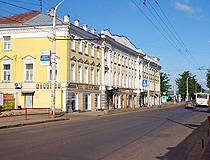
On the street in Kostroma
Author: Dmitry A. Shchukin
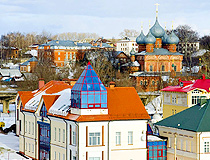
Kostroma cityscape
Author: Yuriy Chulkov
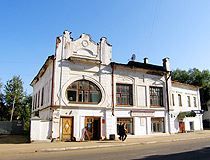
Picturesque old building in Kostroma
Author: Alena Amplieva
Kostroma - Features
Kostroma is one of the oldest Russian cities with a rich historical and cultural heritage. This city is a unique monument of Russian urban planning of the 16th-19th centuries with a lot of monuments of architecture and history. It is one of the Russian cities that have preserved, in general, its architectural appearance. The Volga River, dividing the city into two parts, gives it special beauty and attractiveness.
This city has an unusual street layout: they fan out from the Volga embankment. There is a legend that Catherine II ordered the court architects to develop a city plan for Kostroma. None of the projects satisfied her. Then one of the architects asked what, in her opinion, this city should look like. Catherine spread her fan, which she held in her hands, and said: “Here is an example”.
The name “Kostroma” is explained by historians in different ways. According to one version, the city was named after the Kostroma River, on the banks of which it stands. According to another version, the name may be associated with one of the characters of peasant beliefs - Kostroma - a straw scarecrow usually burned with the advent of spring. The most popular version refers to the times when on the banks of the Volga River people built large “kostry” (“bonfires”) of tree trunks, which were later rafted down the river.
The climate is temperate continental. The average temperature in January is minus 10.9 degrees Celsius, in July - plus 18.3 degrees Celsius. The City Day in Kostroma is celebrated on the second Saturday of August.
The main rivers of Kostroma are the Volga (Gorky Reservoir) and the Kostroma, its left tributary. The city has a river port, but regular passenger traffic is very limited. In summer, several cruise ships stop at this port daily. Kostroma is connected with Moscow by the daily train “Kostroma”. Urban transport includes buses, minibuses, and trolleybuses.
Tourism is considered as the most important direction of development of the city economy. Kostroma is traditionally included in the Golden Ring of Russia tourist route and cruises along the Volga. The Golden Ring of Russia is a tourist route that passes through the old cities of North-Eastern Russia, where unique historical and cultural monuments have been preserved (Vladimir, Ivanovo, Kostroma, Pereslavl Zalessky, Rostov the Great, Sergiev Posad, Suzdal, Uglich).
Most tourists visit the city as part of a day trip. Several tourist brands are developing in Kostroma: “Kostroma - the pearl of the Golden Ring”, “Kostroma - the jewelry capital of Russia”, “Kostroma - the birthplace of Snegurochka (the Snow Maiden)”, “Kostroma - the cradle of the Romanov dynasty”. Such traditional products as Kostroma cheese and Kostroma linen are produced in this city.
Since old times, Kostroma was famous for its craftsmen, who made beautiful household utensils and toys. Today, you can buy original home decorations made of wood, clay, and ceramics. Hand painted ceramic dishes are especially popular among visitors.
Main Attractions of Kostroma
Susanin Square - the central square of Kostroma built according to the general plan of the city of 1781-1784. Here you can see a unique preserved architectural ensemble of the late 18th-19th centuries. The main dominant of the square is the Fire Tower (1825), which has become one of the symbols of Kostroma. Today, there is a firefighting museum in this building.
On this square there are also such interesting architectural monuments as the Shopping Arcade, the Borshchov’s House, the Guardhouse, as well as the monument to Ivan Susanin (a Russian national hero of the Time of Troubles).
Ostrovsky Pavilion - one of the main symbols of Kostroma. This elegant snow-white rotunda stylized as a noble building of the 18th-19th centuries is located on the bank of the Volga River, on a high embankment remained from the ramparts of the old Kostroma kremlin. From here you can enjoy magnificent views of the Volga. The pavilion is named after the Russian playwright Alexander Ostrovsky. 1 Maya Street, 2.
Monument to Lenin (1928). The most interesting fact about this monument located in the Central Park of Kostroma is that its pedestal was initially built for the monument to the 300th anniversary of the Romanov dynasty celebrated in the city in 1913. It is also one of the largest monuments to Lenin that exists in Russia today. Chaykovskogo Street, 4?.
Snegurochka’s House - the place of residence of the fabulous granddaughter of Father Frost (Russian Santa Claus) and her assistants. The house itself is part of the entertainment complex, which includes souvenir shops, a restaurant of Russian cuisine, a belfry, playgrounds.
Exciting and informative excursions are held for visitors throughout the complex. The play of Alexander Ostrovsky about Snegurochka was written near Kostroma. The movie about her was also created in the vicinity of this city. Lagernaya Ulitsa, 38.
Church of the Resurrection on Debrya (1645-1651) - a beautiful monument of architecture and culture, one of the most visited attractions in the Upper Volga region, one of the first stone buildings of Kostroma. The church was built at the expense of the townspeople, the most significant amount was donated by the merchant Kirill Isakov, who made a fortune by trading with England. Nizhnyaya Debrya Street, 37.
Holy Trinity Ipatiev Monastery - the soul and heart of Kostroma, the cradle of the Romanov dynasty, an object of Russian cultural heritage towering on the bank of the Kostroma River in the western part of the city. On the territory of the Ipatiev Monastery there are more than ten historical buildings. The magnificent Trinity Cathedral (1650-1652) is its main attraction. Prosveshcheniya Street, 1.
Bogoyavlensky Convent (the 16th-19th centuries). The main building of the convent is the Epiphany Cathedral (1559-1565). In addition to the picturesque complex of church buildings, you can also see the Feodorov Icon of the Mother of God - the miraculous icon of the Virgin revered by the Russian Orthodox Church and known as one of the shrines of the Romanov dynasty. Simanovskogo Street, 26.
Museum-Reserve “Kostroma Sloboda” - one of the oldest open-air museums in Russia located near the Ipatiev Monastery. On the territory of the museum you can see wooden architectural monuments of the 18th century moved here from flooded areas. Later, the buildings of the 19th-20th centuries were added. The most famous exhibit is the Church of the Mother of God (1552) from the village of Kholm, the oldest wooden church preserved in the Kostroma region. Prosveshcheniya Street, 1a.
Romanovsky Museum. Opened to celebrate the 300th anniversary of the Romanov dynasty in 1913, it is one of the most famous museum buildings constructed in the provincial cities of Russia. The architecture of the building is an imitation of an old Russian house. The museum exposition covers the history of the Romanov family. Here you can also see paintings, archaeological finds, and objects of applied art. Mira Avenue, 5.
Museum of Flax and Birch Bark - a private museum where fabrics and clothes created using traditional technologies are presented, as well as the stages of processing flax. The museum also has a souvenir shop with a wide range of linen, birch bark, and ceramics items. Tereshkovoy Street, 38.
Museum of Jewelry Art - a private museum, which exposition has the most beautiful jewelry items made by local masters in the 17th-20th centuries. In total, there are about 500 exhibits. Sovetskaya Street, 7.
Sumarokovo Elk Farm - the only elk farm in Russia located about 20 km southeast of Kostroma. Visitors are allowed to feed and pet elks, during the tour you will learn a lot of interesting features from the life of these animals.
Kostroma also has such cultural institutions as a drama theater, a puppet theater, a philharmonic society, and a circus.


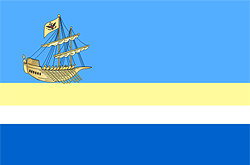
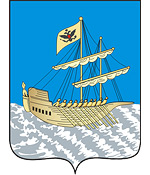
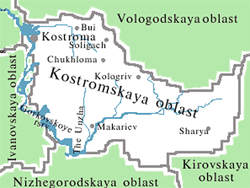



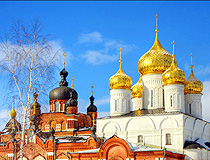
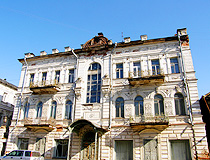
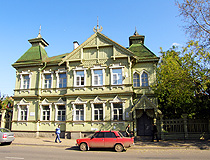
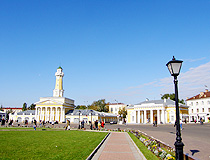

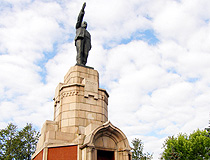
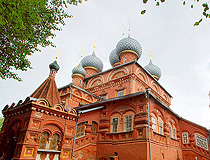
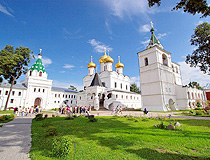
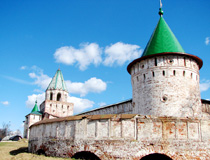
The comments of our visitors